The Black gram is one of the essential pulse crops grown throughout the country. As a result of the crop’s ability to withstand adverse climatic conditions, it improves soil fertility by fixing atmospheric nitrogen. Approximately 22.10 kg of N is produced per hectare by the crop. Approximately 59 thousand tonnes of urea are supplemented each year by this process. It is cultivated throughout the country during Kharif. In the southern and south-eastern parts of India, it is best suited for rice fallow during rabi.
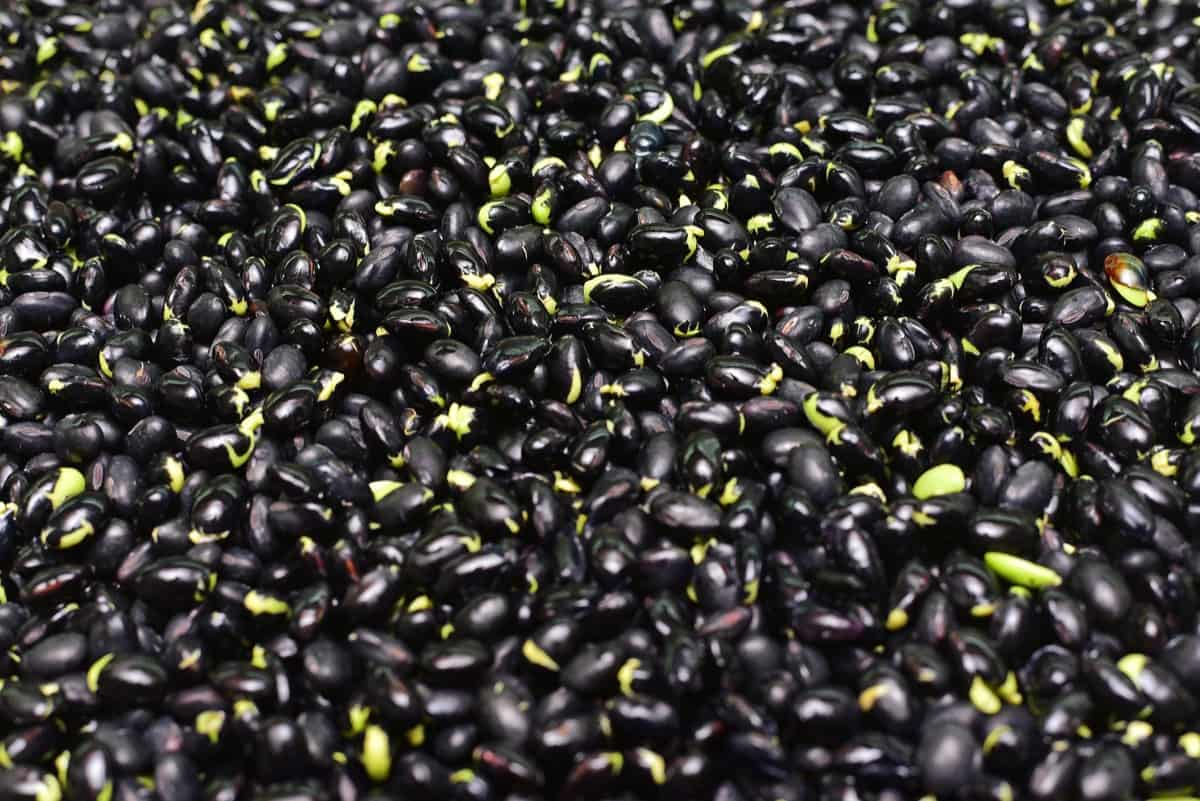
A Black gram requires heavier soil than a green gram. The pulse ‘Black gram’ plays an important role in the Indian diet, as it contains vegetable protein and supplements to a cereal-based diet. It contains about 26% protein, almost three times that of cereals, other minerals, and vitamins. Besides, it is also used as nutritional fodder, especially for milch animals. Below are the commonly affecting pests and diseases in Black gram cultivation fields. Knowing the symptoms and control of these diseases is necessary for good yields.
Pest and disease management in black gram
Pests in Black gram crop
Blue Butterfly
The symptoms are caused primarily by the larva of Euchrysops cnejus. The adult male is light purple, while the female is rather heavily black-dusted with its pale shining blue wing bases. Females can lay from 60 to 200 eggs in their lifetime and place them singly on shoots, flower buds, or leaves. The larva is typically stout, flat pale green or yellow, measuring about 13 mm with a red line and short black hairs. Black ants often attend them.
Due to their coloring and their feeding spots, the caterpillars are hard to find despite being diurnal (active during the daytime). The larvae feed on flowers and young pods, especially in pulse crops, and bore into them. Pupation occurs on the leaves.
In case you missed it: Top 16 Steps to Boost Chickpea/Bengal Gram Yield: How to Increase Production, Quality, and Tips
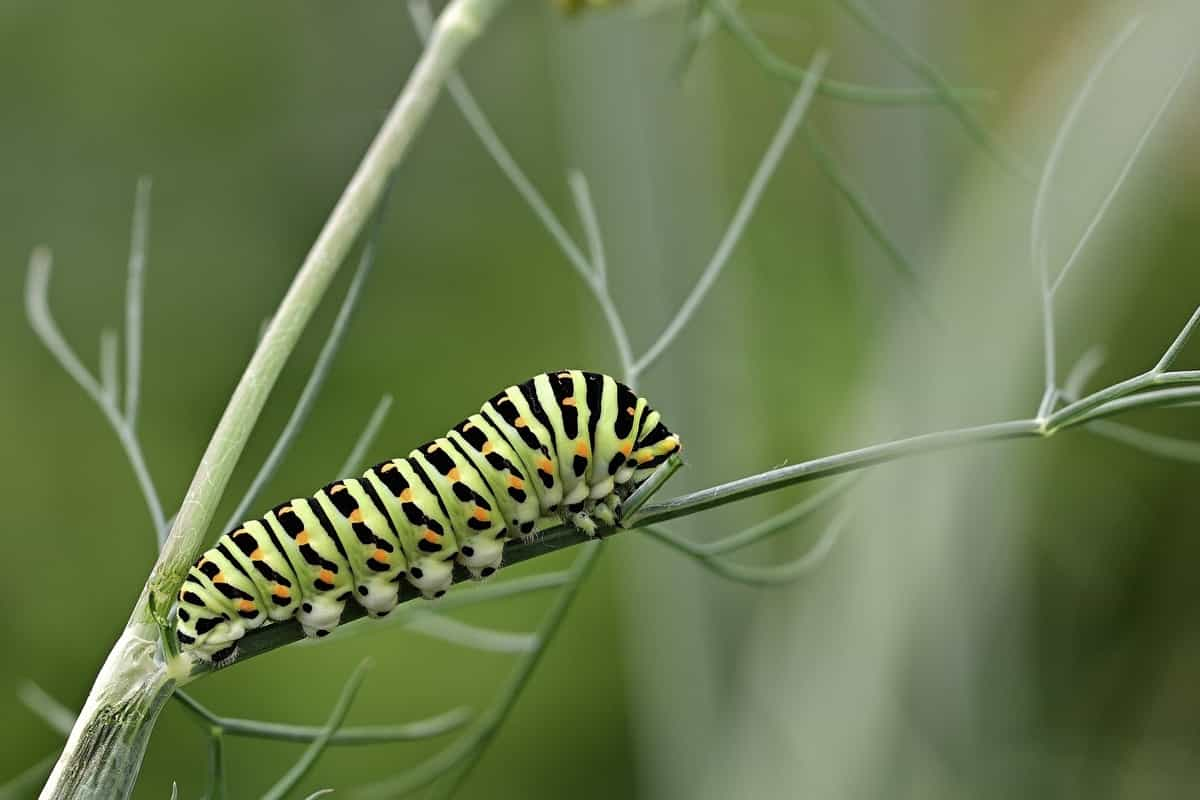
Damage symptoms
- Symptoms are apparent on buds, flowers, and seed pods, where entry or feeding holes can be found.
- Multiple holes per pod usually characterize pod damage.
- The holes secrete sap, and the edge of the holes turns black.
Biological control
- Use natural enemies to attack all lepidopteran pests to control the grass blue butterfly population. Release egg parasitoid Trichogramma sp. at weekly intervals at 0.6 lakh/acre/week four times.
- Conserve Telonomus spp. (an egg parasitoid) and Apnateles spp. (a larval parasitoid) by not spraying any pesticides when parasitoids are being observed.
- Larvae can also be controlled by insecticides targeting other caterpillars.
- Cover your plants thoroughly with Bacillus thuringiensis (at least 100 I water/ha).
- Neem oil can also keep the pest under control.
Chemical control and management
- Profenofos was suggested to control the E. cnejus effectively.
- Alternatively, Spray any one of the below-listed insecticides (Spray fluid 500 l/ha)
- Emamectin benzoate 5%SG 220 g/ha
- Indoxacarb 15.8%SC 333 ml/ha
- NSKE 5% twice, followed by triazophos 0.05%
- Neem oil 2%
- Plant your crop with enough spacing and avoid early or late sowing.
- Rake the soil regularly during infestation to kill larvae and pupae.
- Monitor your field for signs of the pest.
- Collect and destroy the larvae, pupae, and adults.
In case you missed it: Top 19 Steps to Boost Green Gram Yield: How to Increase Production, Mung Bean Quality, and Tips
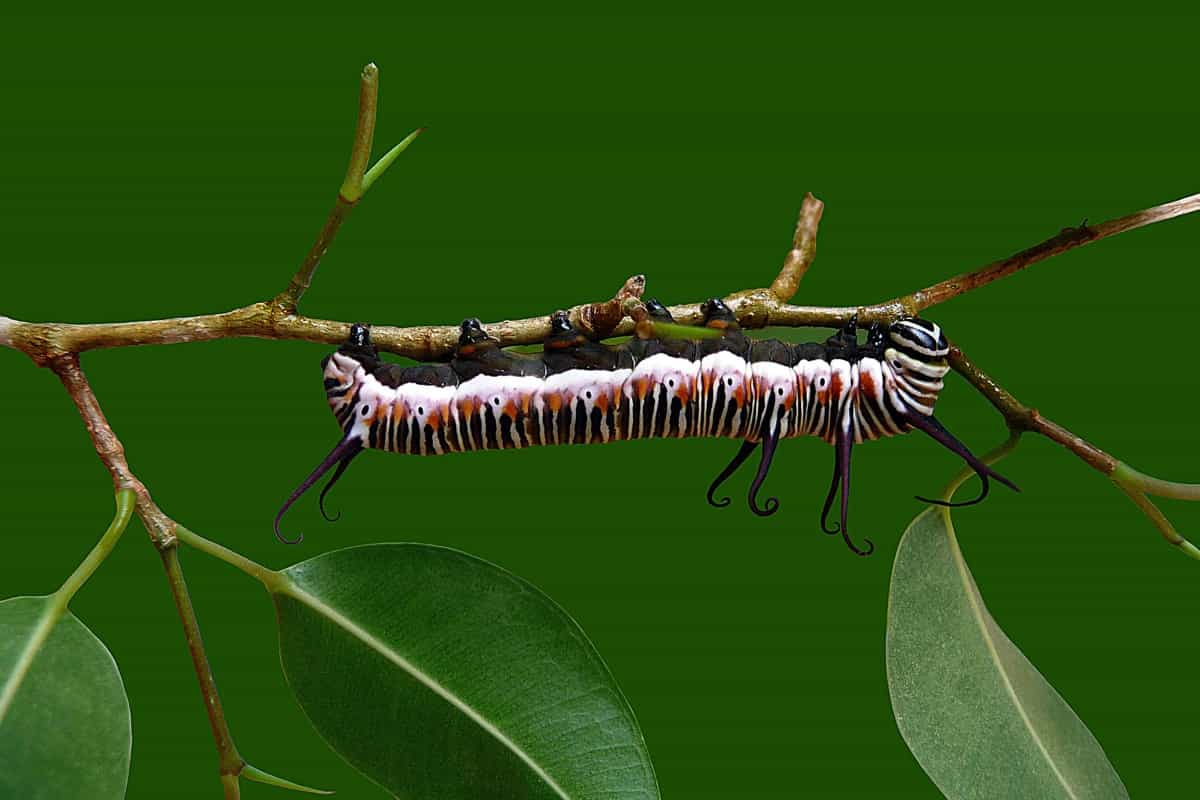
Pod borer
In the fields of cowpea, green gram moth bean, or Black gram, there may be a reproductive stage (flowering stage or pod setting stage). At this stage, these crops are typically infested with spotted pod borer. A hole is made in the pod by the larva to enter. A larva does not leave any seeds in the pods after eating them up.
Damage symptoms
- Observe for the defoliation of leaves from 20 to 35 days.
- Observe for green-colored larvae with black bands laterally on leaves. Later the larvae move on to flowers and fruits.
- Observe bored fruits with round holes. Notice the larvae thrust their head inside the pod, leaving the body outside.
- Monitor the economic threshold level up to 10% of affected pods.
- Observe for warm weather conditions followed by light rains and dry spells, which are favorable for the pest.
Biological control
- Collection and destruction of larvae.
- Conserve natural enemies like Ladybird beetle, Ground beetle, Praying mantis, Pentatomid bug, etc.
- Installation of light traps 1/acre of land
- Place bird perches at 20 nos/acre.
- Spray Neem Seed Kernel powder at 50g/liter of
- water or Neem Oil at 30 ml/liter twice at the time of flowering and early pod formation stage.
- Use of Helicoverpa armigera Pheromone trap at 5 nos/acre
Chemical control and management
- Spray Chlorotraniliprole 18.5% SC at 40 ml/acre during the flowering stage.
- Spray Indoxacarb 14.5 SC at 0.75ml/litre
- Spray Emmamectin benzoate 5% SC at 50 gm/acre.
- Apply Thiodicarb 75%WP at 250 gm/acre or Flubendamide 480 SC at 40 ml/acre
- Deep summer plowing (30 cm) to expose pupae present in the soil.
- Crop rotation with non-host crops like paddy and Brinjal.
Bean aphids
Bean aphids are dark green to dark gray soft-bodied insects often found in dense clusters on tender new growth. Among the most destructive insect pests, it uses its piercing-sucking mouthpart to feed on plant sap. It belongs to the family Aphididae. Farmers and gardeners have long feared bean aphids for their prolific reproductive abilities.
Damage symptoms
- Suck sap from plants, causing them to stunt and curl their leaves when heavily infested
- Excrete honeydew, a sugary substance that causes sticky, shiny leaves and black sooty mold
- Aphids are vectors of many viruses that cause plant diseases.
- Plants can be stunted by injecting toxins
In case you missed it: Top 15 Steps to Boost Black Gram Yield: How to Increase Quality and Production
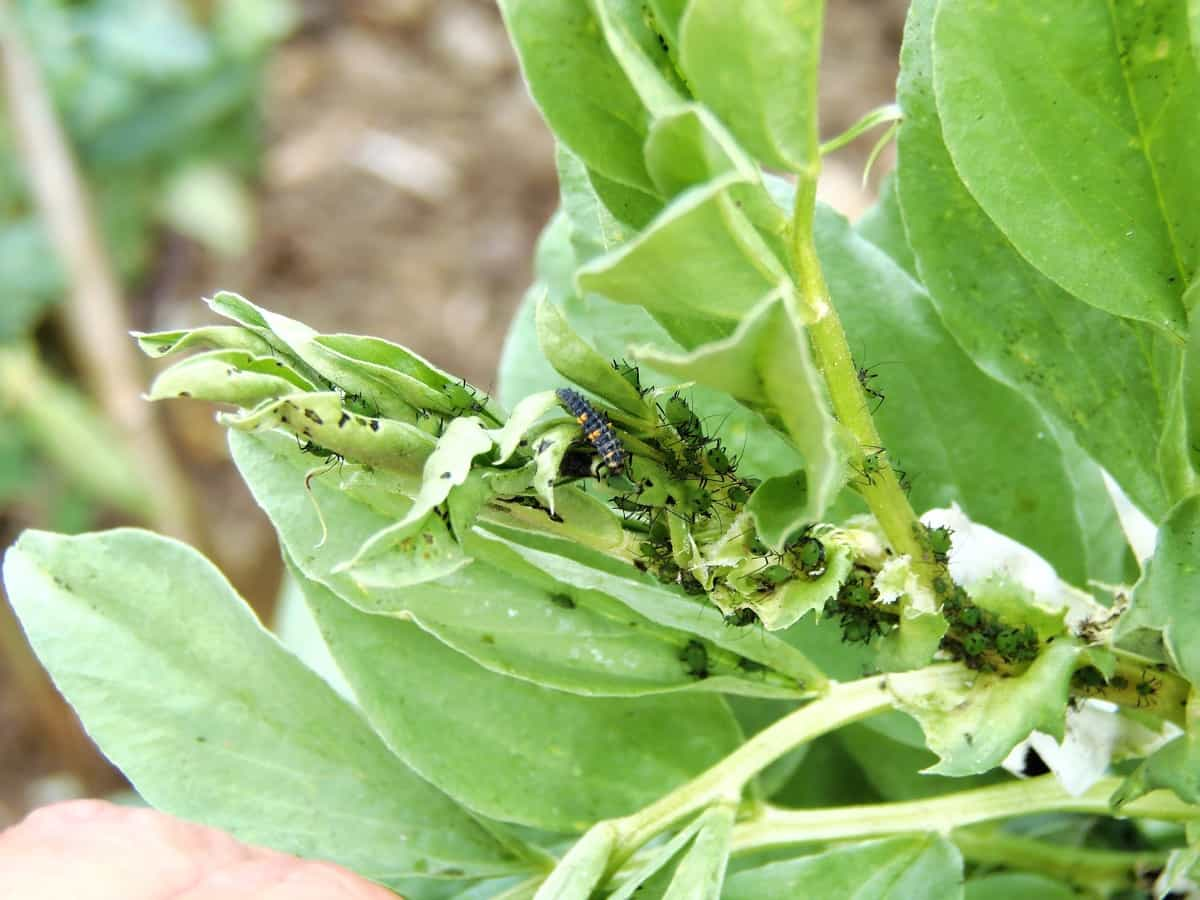
Biological control
- Common predators of aphids in beans include lady beetles, syrphid flies, and lacewings.
- Parasitic wasps also attack aphids, turning them into hard, aphid-shaped shells called mummies.
- Plant field edge habitat that attracts natural enemies and avoids the use of broad-spectrum pesticides known to harm natural enemies.
Chemical control and management
- Spray any one of the below-listed insecticides (Spray fluid 500 l/ha)
- Emamectin benzoate 5%SG 220 g/ha
- Indoxacarb 15.8%SC 333 ml/ha
- NSKE 5% twice, followed by triazophos 0.05%
- Neem oil 2%
- Spray cold water on the leaves to dislodge aphids.
- Pests are constipated by dusting the plants with flour.
- Stems holding aphid clusters should be clipped off and composted.
Stem fly
Adult flies are shiny black and about 2 mm long with a pair of clear wings with a wingspan of 4-5 mm. Young leaves are infested with eggs laid by stem flies. A few millimeters long, the larvae are whitish torpedo-shaped maggots. It takes the larva 8-11 days to pupate. Before pupation, the larva makes an exit hole so the adult can emerge.
Damage symptoms
- Infected stems often appear red on the inside (sometimes pale), and zig-zag tunnels may be visible with maggots inside. Outside of the exit holes, the plants will initially appear healthy.
- Wilting may occur when there are large infestations (3 or more maggots per plant).
- If the plant’s basal stem is damaged, it may even kill the plant, especially in young plants
Biological control
- Deep summer plowing and avoid pre-monsoon sowing.
- Use optimum seed rate and plant spacing.
- Proper crop rotation with dissimilar crops should be followed.
- Remove and destroy the damaged plant parts.
- Release and encourage predatory wasps to control stem fly infestations.
Chemical control and management
- Soil application of phorate 10 G at 10 kg/ha or carbofuran 3 G at 30 kg/ha at the time of sowing will prevent early infestation by stem flies.
- One or two sprays of 0.03% dimethoate 30 EC or 0.05% quinalphos 25 EC can stop the damage.
Blister beetle
Red gram, green gram, and Black gram are all susceptible to beetles throughout the year. Flowers, tender pods, and young leaves are eaten by adults, resulting in fewer pods. When the beetles are at the peak of their adult activity (August-October in southern India), they eat most of the flowers, resulting in substantial crop losses.
In case you missed it: Best Fertilizer for Chickpea/Bengal Gram: Organic, NPK, Management, How and When to Apply
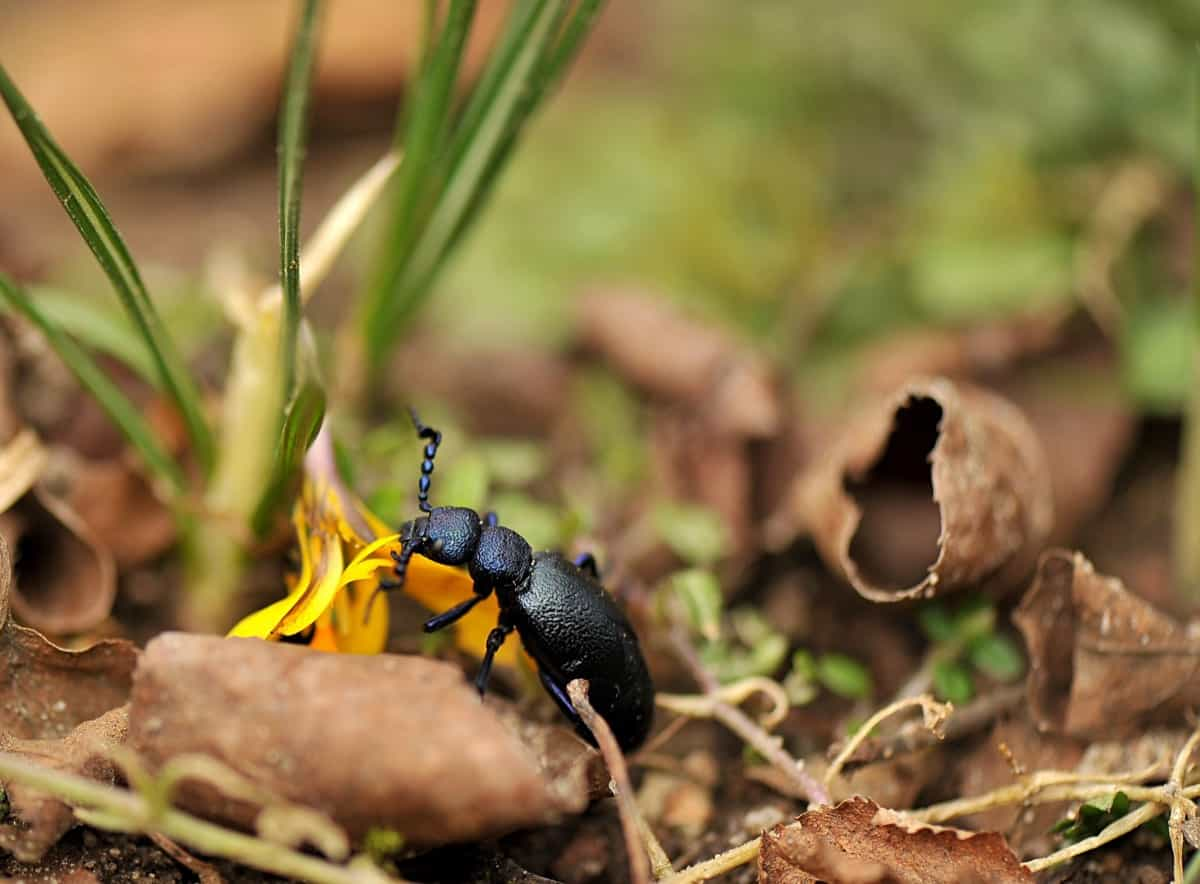
Damage symptoms
- Patches of infected plants in the field
- The primary sign is the formation of galls on the root system of the host
- The roots branch profusely from the gall tissue, causing a ‘beard root’ symptom
- The roots of infected plants become knobby and knotty
- The root system is severely reduced in severely infected plants, and rootlets are almost nonexistent. There is a serious problem with the roots’ ability to absorb and transport water and nutrients
- During the hot part of the day, especially under dry conditions, plants wilt and become stunted.
- Nematode infection predisposes plants to be fungal and bacterial root pathogens
Biological control
- Spread datomaceous earth around threatened plants to reduce their range and numbers.
- Blister beetles are highly attracted to species such as ragweed (Ambrosia species), Pigweed (Amaranthus species), and Ironweed (Veronia species).
- The beetles can be killed within 24 to 48 hours with spinosad sprays.
Chemical control
- Three sprays or dust should be given once in 10-12 days after emergence, i.e.,
- Endosulfan 30 EC 0.07 per cent or
- Monocrotophos 36 SL 0.04 per cent or
- Quinalphos 1.5 percent dust 25 kg/ha.
Diseases in Black gram
Cercospora leaf spot
This leaf spot disease is caused by the fungus Cercospora canescens, infecting black and green grams. The fungus is seed-borne and can survive on plant debris in the soil for more than two years. Following the root system, it can travel huge distances within the soil. It also thrives in alternative hosts or volunteer crops in the field. The transmission to lower plant parts occurs via splattering water and air. Elevated day and night temperatures, moist soils, high air humidity, or heavy stormy rains are favorable conditions for spreading the fungus.
Disease symptoms
- Leaf infected by this disease will have brown, water-soaked spots surrounded by yellowish haloes.
- A leaflet infection occurs mostly on older leaves, causing severe defoliation on older plants. On the green fruit, small water-soaked spots are most noticeable.
- First, they appear, then become raised and enlarged.
- These lesions become irregular, slightly hollow, and light brown with rough, scabby surfaces.
- Ripe fruits are not susceptible to the disease. Seed surfaces become contaminated with bacteria, which remain on them for a while.
- The organism survives on volunteer Black gram plants and infected plant debris in alternate hosts.
Chemical control and management
- Hot water treatment of seeds is possible.
- The application of neem oil extracts also effectively reduces the severity of the disease (higher pod and seed numbers, healthier pods, higher weight).
- If treatment with fungicides is needed, apply products containing mancozeb, chlorothalonil at 1 gram per liter, or thiophenate methyl at 1 ml twice at ten days intervals.
Bacterial leaf blight
Black gram foliage can be affected by this disease at any growth stage. The late blight fungus often kills transplants planted in the field. As well as the calyx or stem attachment, the fungus infects the fruit. On the fruit, concentric rings are present, and large lesions usually cover nearly the entire surface.
Disease symptoms
- Symptoms of the fungus include leaf spots and blight on the foliage. Small, black lesions are the first signs of early blight on older foliage.
- As the spots enlarge, concentric rings in a bull eye pattern can be seen in the center when they are one-fourth inch in diameter or larger.
- Spots may cause yellowing of the tissue surrounding them. High temperatures and humidity during this time kill much of the foliage.
- As with leaf lesions, stem lesions may cause the plant to girdle if they occur near the soil surface.
Chemical control and management
- The seeds should be soaked in 500 ppm Streptocycline solution for 30 minutes before sowing. Later, two sprays of Streptocycline were combined with 3 g of Copper Oxychloride per liter at an interval of 12 days.
- Spray Carbendazim 500g or mancozeb 2kg/ha within 15 days of disease appearance.
Powdery mildew
Among the most economically significant diseases of Black gram is powdery mildew. The disease occurs worldwide, wherever Black gram is cultivated. Warm and humid environments are most conducive to this disease’s development. Black gram is cultivated throughout the year and most commonly infected during winter. Black gram’s yield can be severely reduced by it.
Disease symptoms
- On leaves and other green parts, white powdery patches appear, which later turn dull
- Gradually, these patches grow and will become circular, covering the lower surface.
- There is a whitish powdery growth on both surfaces of the leaves when the infection is severe
- In severe infections, the foliage turns yellow, resulting in premature defoliation
- In addition, the disease causes forced maturation of the infected plants, resulting in heavy yield losses.
Chemical control and management
- Spray Wettable sulfur 80% WDG 600 grams or Propiconazole 25% EC or Flusilazole 40% EC at 200 ml per acre in 200 liters of water twice at the initiation of disease and ten days later.
- Spray Carbendazim at 200 grams per acre in 200 liters of water at the initiation of the disease and repeat after ten days.
Root rot and leaf blight
Root rot disease caused by Macrophomina phaseolina Goid is one of the Black gram’s most important fungal diseases. It inflicts a series of economic losses to the crop. It was reported to cause a yield loss of 28.6 percent in Black gram. It is an important disease of many crops, particularly in warm and dry regions.
In case you missed it: Best Fertilizer for Green Gram: Organic, NPK, Biofertilizer, and Application
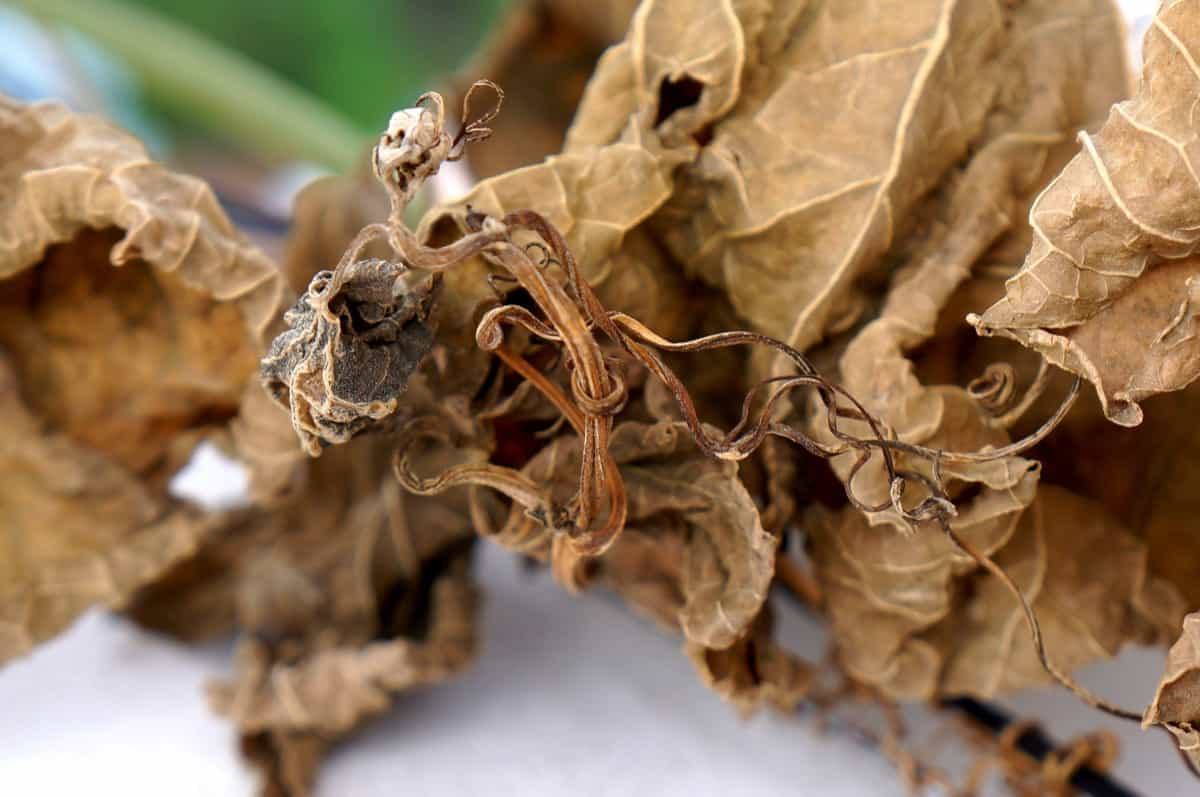
Disease symptoms
- Pathogens cause Black gram seed decay, damping-off, seedling blight, stem canker, and leaf blight.
- In most cases, the disease occurs during pod development
- In its early stages, the fungus causes seedling blight and seed and root rot.
- Yellow leaves and irregular brown lesions appear on leaves affected by this disease.
- As a result of the coalescence of such lesions, big scars form on the leaves, causing them to dry too early.
- The roots and basal portion of the stem turn black, and the bark peels easily.
- The reddening of internal tissues can be observed when the root of the affected plant is split open.
Chemical control and management
- Seed treatment with Trichoderma viride 4 g/kg or Pseudomonas fluorescens 10 g/kg
- Basal application of zinc sulfate 25 kg/ha
- Basal application of neem cake at 150 kg/ha
- Soil application P. fluorescens or T. viride – 2.5 kg/ha + 50 kg of well-decomposed farm yard manure or sand at 30 days after sowing.
- Spot drenching of Carbendazim at 1 gm/ lit
Stem canker and Macrophomina blight
Stem canker is caused by fungi that survive for several years in residue or the soil. Fungal spores from infested residue are usually the main source of infection, not seeds. Many weed species also serve as hosts. During rainy weather, the fungus produces spores that splash onto plant tissue. Infection can occur at different temperatures, but the fungus requires prolonged moist conditions. When rainy weather persists during the early vegetative stage, the disease can spread to epidemic levels
Disease symptoms
- A four-week-old Black gram crop shows symptoms as raised white cankers at the stem base in rice fallows
- Over time, these become raised brown streaks that spread upwards as they enlarge
- A stunted plant produces dark green leaves that are mottled and reduced in size.
- Regular leaves on the affected plants drop suddenly and dry
- Flowering and podding are greatly reduced.
Chemical control and management
- Soil amendment with farm yard manure at 12.5 tons per hectare helps reduce the incidence of the disease
- Destroy the diseased plant debris by burning or burying it in the soil.
- Seed treatment with T. viride at 4 grams per kg or P. fluorescens at 10 grams per kg of seed or Carbendazim or Thiram at 2 grams per kg of seed.
- Spot drenching with Carbendazim 1 gram per liter or P. fluorescens or T. viride 2.5 kg per hectare with 50 kg farm yard manure.
Conclusion
One of the significant constraints in achieving the potential yield of pulses in India is the occurrence of various diseases and pests. Many fungi, viruses, insects, and nematodes have been recorded, which affect production. The description of some important fungal diseases and pests, their symptoms, causal organisms, and control measures are mentioned above. You should have good knowledge to save your crop from yield losses.
- Types of Pesticides Used in Agriculture: A Beginner’s Guide
- Economical Aquaculture: A Guide to Low-Budget Fish Farming
- 15 Common Planting Errors That Can Doom Your Fruit Trees
- How to Make Houseplants Bushy: Effective Tips and Ideas
- Innovative Strategies for Boosting Coconut Pollination and Yield
- Pollination Strategies for Maximum Pumpkin Yield
- The Complete Guide to Chicken Fattening: Strategies for Maximum Growth
- Natural Solutions for Tulip Problems: 100% Effective Remedies for Leaf and Bulb-Related Issues
- Revolutionizing Citrus Preservation: Towards a Healthier, Greener Future
- Natural Solutions for Peony Leaf and Flower Problems: 100% Effective Remedies
- Maximizing Profits with Avocado Contract Farming in India: A Comprehensive Guide
- Natural Solutions for Hydrangea Problems: 100% Effective Remedies for Leaf and Flowers
- The Ultimate Guide to Choosing the Perfect Foliage Friend: Bringing Life Indoors
- From Sunlight to Sustainability: 15 Ways to Use Solar Technology in Agriculture
- The Ultimate Guide to Dong Tao Chicken: Exploring from History to Raising
- The Eco-Friendly Makeover: How to Convert Your Unused Swimming Pool into a Fish Pond
- Mastering the Art of Delaware Chicken Farming: Essentials for Healthy Backyard Flocks
- 20 Best Homemade Fertilizers for Money Plant: DIY Recipes and Application Methods
- How to Craft a Comprehensive Free-Range Chicken Farming Business Plan
- Brighten Your Flock: Raising Easter Egger Chickens for Beauty and Bounty
- How to Optimize Your Poultry Egg Farm Business Plan with These Strategies
- Subsidy for Spirulina Cultivation: How Indian Government Schemes Encouraging Spirulina Farmers
- Ultimate Guide to Raising Dominique Chickens: Breeding, Feeding, Egg-Production, and Care
- Mastering the Art of Raising Jersey Giant Chickens: Care, Feeding, and More
- Ultimate Guide to Raising Legbar Chickens: Breeding, Farming Practices, Diet, Egg-Production
- How to Raise Welsummer Chickens: A Comprehensive Guide for Beginners
- How to Protect Indoor Plants in Winter: A Comprehensive Guide
- Ultimate Guide to Grow Bag Gardening: Tips, Tricks, and Planting Ideas for Urban Gardeners
- Guide to Lotus Cultivation: How to Propagate, Plant, Grow, Care, Cost, and Profit
- Agriculture Drone Subsidy Scheme: Government Kisan Subsidy, License, and How to Apply Online
- Ultimate Guide to Raising Araucana Chickens: Breed Profile, Farming Economics, Diet, and Care
- Bringing Hydroponics to Classroom: Importance, Benefits of Learning for School Students
- Ultimate Guide to Raising Polish Chickens: Breed Profile, Farming Economics, Diet, and Care
- Ultimate Guide to Raising Australorp Chickens: Profile, Farming Economics, Egg Production, Diet, and Care
- Silkie Chicken Farming: Raising Practices, Varieties, Egg Production, Diet, and Care
- Sussex Chicken Farming: Raising Practices, Varieties, Egg Production, Diet and Care